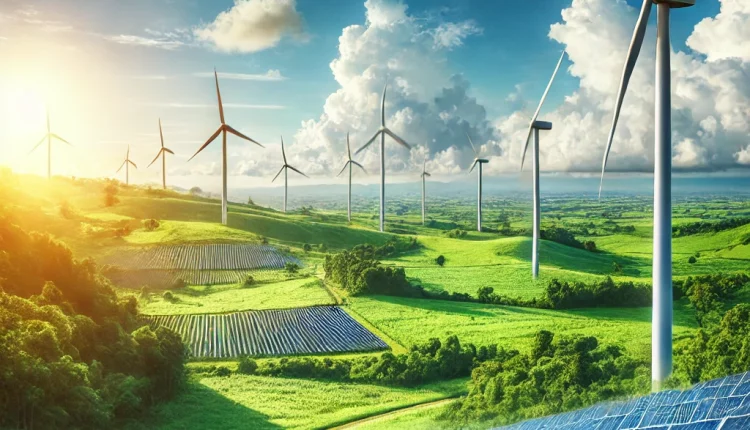- Advertisement -
As climate change accelerates, shifting to renewable energy sources has become one of the most critical strategies for reducing greenhouse gas emissions. Fossil fuels, which have powered human development for centuries, are responsible for the bulk of carbon emissions driving global warming. In contrast, renewable energy sources like solar, wind, and hydropower offer a clean alternative that can drastically reduce our carbon footprint.
Why Renewable Energy is Vital
Renewable energy is derived from natural processes that are replenished constantly, such as sunlight, wind, and water flow. Unlike fossil fuels, renewables produce little to no greenhouse gas emissions. This makes them key players in the global effort to stabilize atmospheric carbon levels and prevent further temperature rises. The use of renewables also improves air quality, which has direct health benefits by reducing pollutants like sulfur dioxide and nitrogen oxides, commonly released from coal and oil burning.
Types of Renewable Energy
- Solar Power: Harnessing the sun’s energy through photovoltaic cells or solar thermal systems is one of the fastest-growing renewable sources. Solar panels can be installed on homes, businesses, and solar farms, turning sunlight directly into electricity.
- Wind Energy: Wind turbines convert kinetic energy from wind into electrical power. Onshore and offshore wind farms are rapidly expanding as technology improves, making wind energy increasingly competitive with traditional power sources.
- Hydropower: Generating electricity from flowing water has long been a reliable renewable energy source. Modern advancements have made hydropower more efficient, but the environmental impact of dams remains a consideration.
- Geothermal Energy: Tapping into the Earth’s internal heat, geothermal plants can produce consistent energy. This source is particularly beneficial in regions with volcanic activity.
- Biomass: Organic materials like wood, agricultural waste, and algae can be burned or processed to produce electricity and heat. While biomass is considered renewable, its sustainability depends on the source material and the efficiency of the technology used.
Overcoming Barriers
Despite the clear advantages, renewable energy faces several challenges. Initial infrastructure costs for solar panels, wind farms, or hydropower plants are often higher than continuing to burn fossil fuels. Additionally, energy storage technologies, such as batteries, are still developing, which makes it difficult to store intermittent energy sources like solar or wind for use during cloudy or calm periods. However, with the declining cost of solar panels and wind turbines, as well as breakthroughs in storage solutions, these barriers are being steadily overcome.
The Role of Policy and Innovation
Government policies and international agreements, like the Paris Agreement, are pivotal in driving the transition to renewable energy. By offering incentives, subsidies, and setting regulatory targets, countries can encourage both industries and consumers to shift away from carbon-heavy energy sources. Furthermore, continuous innovation is making renewable energy technologies more efficient, affordable, and adaptable to different environments. For instance, floating solar farms and offshore wind farms open new avenues for clean energy production where land is scarce.
Conclusion
Transitioning to renewable energy is crucial for mitigating the effects of climate change. By reducing dependency on fossil fuels, we can lower global greenhouse gas emissions, slow temperature rises, and build a more sustainable future. Renewable energy not only helps protect the planet but also fosters economic growth by creating new industries and jobs. As technology improves and global policies align, renewable energy will undoubtedly play a central role in combating climate change.

